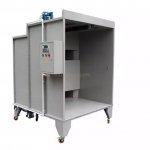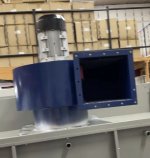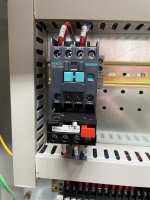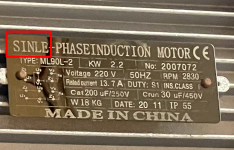duttonbrown
Lighting Designer
- Location
- Minneapolis, MN, USA
- Occupation
- Product Engineer, Lighting Designer
Hello,
Working to install a powder coating booth (http://www.colo-group.com/closed-powder-coating-booth-15241932163728183.html) which shipped with a fan + blower. The unit is assembled and ready for use, but when I switch the fan on, it starts to ramp up and then trips the breaker inside the panel attached to the booth. It seems the fan draws too much current and cuts off before the fan gets up to speed.


I spoke to the manufacturer about this but they have ghosted me, so I'm unsure if the equipment is rated to work together or if something is defective. May I kindly ask for some advice about whether these items should work together?
Here's the motor info on the blower. I notice rated current is 13.7A.

Here's a photo inside the control box. On the TENGEN, I moved the slider left over past 13A, but it still trips.

Here's a video with sound of what happens each time. Listen to hear the fan start to spin and then it trips.
Any ideas about what may be the issue? I noticed the fan blades inside are a little bent too, but I'm not sure that'd cause it to draw so much extra current.
I really appreciate any help.
Working to install a powder coating booth (http://www.colo-group.com/closed-powder-coating-booth-15241932163728183.html) which shipped with a fan + blower. The unit is assembled and ready for use, but when I switch the fan on, it starts to ramp up and then trips the breaker inside the panel attached to the booth. It seems the fan draws too much current and cuts off before the fan gets up to speed.


I spoke to the manufacturer about this but they have ghosted me, so I'm unsure if the equipment is rated to work together or if something is defective. May I kindly ask for some advice about whether these items should work together?
Here's the motor info on the blower. I notice rated current is 13.7A.

Here's a photo inside the control box. On the TENGEN, I moved the slider left over past 13A, but it still trips.

Here's a video with sound of what happens each time. Listen to hear the fan start to spin and then it trips.
Any ideas about what may be the issue? I noticed the fan blades inside are a little bent too, but I'm not sure that'd cause it to draw so much extra current.
I really appreciate any help.



 Totally missed the joke.
Totally missed the joke.